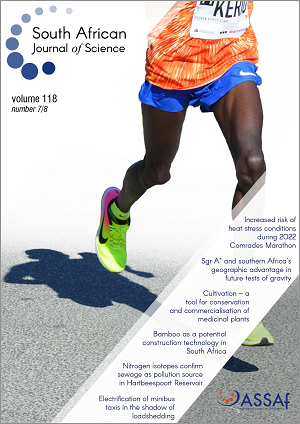Statistical modelling to predict silicosis risk in deceased Southern African gold miners without medical evaluation
DOI:
https://doi.org/10.17159/sajs.2022/12502Keywords:
gold miner, silicosis, risk prediction, statistical model, classification accuracyAbstract
The Qhubeka Trust was established in 2016 in a legal settlement on behalf of former gold miners seeking compensation for silicosis contracted on the South African mines. Settlements resulting from lawsuits on behalf of gold miners aim to provide fair compensation. However, occupational exposure and medical records kept by South African mining companies for their employees have been very limited. Some claimants to the Qhubeka Trust died before medical evaluation was possible, thus potentially disadvantaging their dependants from receiving any compensation. With medical evaluation no longer possible, a statistical approach to this problem was developed. The records for claimants with medical evaluation were used to develop a logistic regression prediction model for the likelihood of silicosis, based on the potential predictors: cumulative exposure to respirable dust, age, years since first exposure, years of life lost prematurely, vital status at 31 December 2019, and a history of tuberculosis diagnosis. The prediction model allowed estimation of the likelihood of silicosis for each miner who had died without medical evaluation and is a novel approach in this setting. In addition, we were able to quantitatively evaluate the trade-offs of different silicosis risk classification thresholds in terms of true and false positives and negatives.
Significance:
- A statistical approach can be used for risk estimation in settings where the outcome of interest is unknown for some members of a class.
- The likelihood of silicosis in deceased miners without medical evaluation in the Qhubeka Trust can be accurately estimated, using information from finalised claims.
- Strategies for classifying the silicosis status of deceased miners without medical evaluation in the Qhubeka Trust can be assessed in a rigorous, quantitative framework.
Downloads
Published
Issue
Section
License

All articles are published under a Creative Commons Attribution 4.0 International Licence
Copyright is retained by the authors. Readers are welcome to reproduce, share and adapt the content without permission provided the source is attributed.
Disclaimer: The publisher and editors accept no responsibility for statements made by the authors
How to Cite
- Abstract 431
- PDF 617
- EPUB 180
- XML 313
- Supplementary material 123












.png)